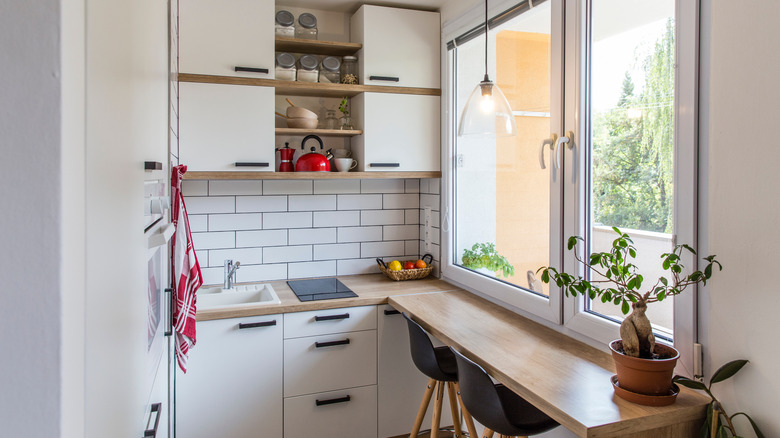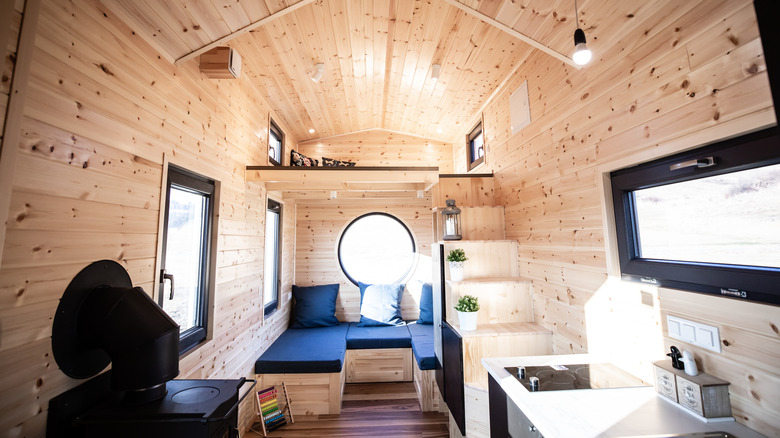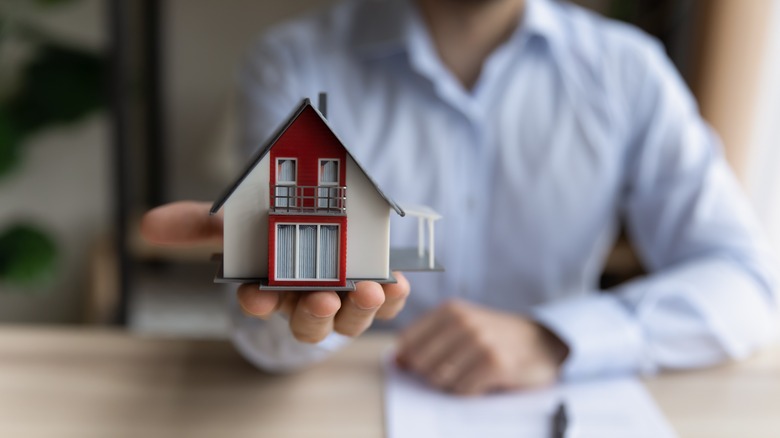How Many Square Feet Do You Really Get With A Tiny House?
It's almost guaranteed that you've heard about the many people desiring to live in tiny homes. There are a number of reasons why people would want to live in a tiny house, per Money Crashers. The largest benefit is probably that those who live in smaller homes spend less money on housing, electricity, and other expenses. Additionally, those who love to travel would have more freedom if they lived in a home on wheels. And, to live in such a small space, you'd first have to downsize your belongings. While this could be a con for some, others enjoy the simplicity that comes with owning less stuff.
Perhaps you're allured by tiny homes but aren't sure exactly how small they are. If you've ever wondered what the typical square footage of these miniature properties are, you'll find the answer below. Additionally, if you're considering living in a tiny house, below are also some tips on choosing the right number of square feet for you.
The typical size of a tiny home
Most agree that, for a home to be considered tiny, it needs to be below 400 or 500 square feet. The Tiny House says 400, while Quicken Loans says 500 is the limit. The smallest homes can even have only 60 square feet of space. However, the average size is around 200, which is about the size of a dorm room at college.
Designing Idea says that, typically, tiny homes are 8 feet across, 18 feet long, and 13½ feet tall. The website also says that the size of a tiny home greatly depends on whether it's in a permanent location or if it is mobile. Homes on wheels typically don't exceed 320 square feet, while those on permanent locations have a lot more freedom with their dimensions.
Some even say that the limit on permanent tiny homes could increase to 1,000 square feet. However, beyond 1,000 and your home makes the transition from tiny to just a smaller regular-sized home.
How to choose the right size for you
If you're considering building a tiny home, there are some things you'll need to consider before determining what size it should be. The first and most important factor is whether or not it will be mobile, as discussed above. Those who want a larger property should choose a permanent location.
The Tiny House recommends taking a look at some tiny houses with about 200 square feet, since this is the average. Seriously consider if you think you could live in a home of that size – if you think you can, then 200 may be a good choice; if not, you'll want to add some space. Another great way to determine what size you should get is by conducting a trial run, per The Simplicity Habit.
Renting a tiny home of an average size for a few days will truly give you a feel for what living tiny is really like. For example, for The Simplicity Habit, after living in such a small space, reality set in with regard to the lack of privacy and comfort. If you have a similar experience, you may want to increase the square footage of your future home. However, perhaps you would love living in such a tiny area – you'll never know for sure until you try it.


